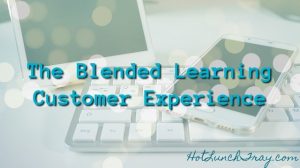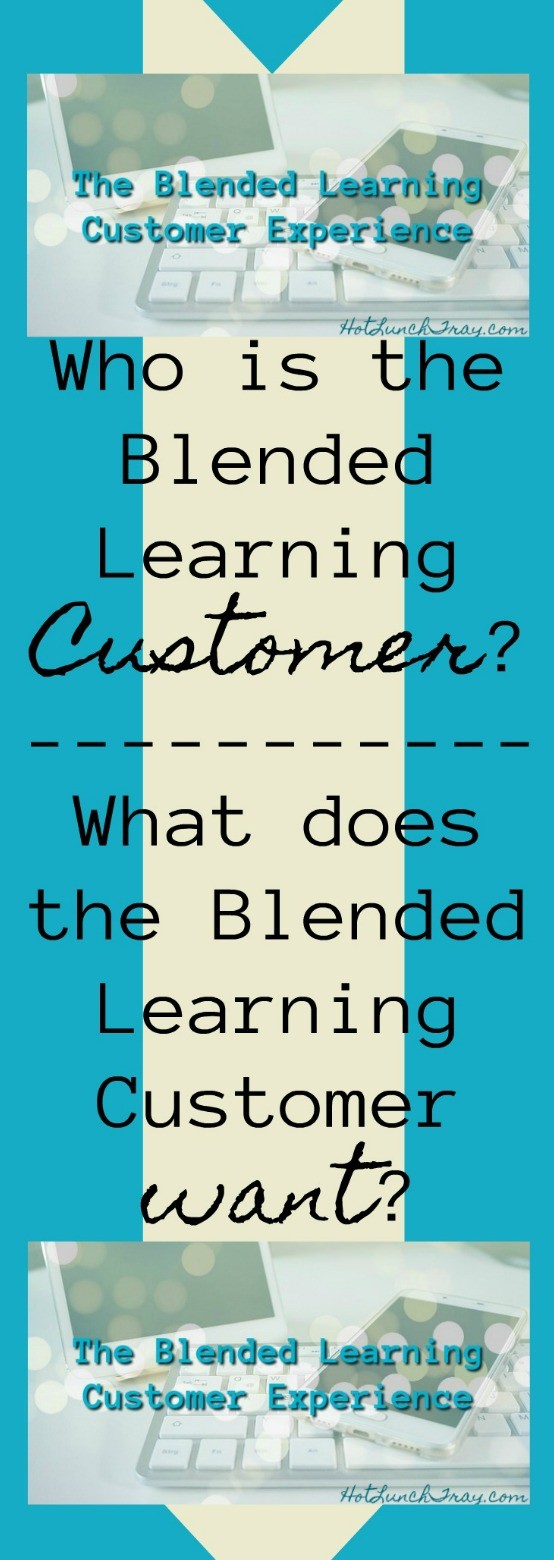Teachers really may be the busiest people you know during the school year. And when it comes to building blended learning content, what they do daily is evident in the struggle to produce the best blended learning possible. Instead of viewing the blended learning creation as the crucial point, what about considering content from the Blended Learning Customer’s point of view?
Who is the Blended Learning Customer?
Students
Students likely are in, or will be in, more than one class online. From the students point of view, the easiest way to get to your content is if the platform experience is the same in other classes, other grade levels. Instead of feeling like you have to conform, remember these are colleagues doing pre-work for you. How can you build on the experiences from prior teachers and grade levels?
Families
Any family member who wants to help with school work at home deserves the benefit of a clear, easy way to help their student. Remember to present information clearly and simply for those at home willing to help you teach. Parents always benefit from a cheat sheet and a little bit of training. They already think their kids are smarter than they are at anything with a screen, don’t make them feel worse.
Colleagues
Fellow educators interested in teaching via blended learning techniques look to your content for inspiration. looking to share the workload, who want to copy your content, to
What does the Blended Learning Customer want?
Predictability
Consider the instructional design of your content. How can you build anticipation for the content you create with text, spacing, indentation, organization, and images? The layout and structure of the content itself should alert you customers to what is coming next. People are pattern seekers; consider always having a similar amount, type, and order to each module or lesson online. Consider how the outline of content is clear when it is as similar as possible to train blended learning users to expect what comes next. The design of your content can support your content.
Familiarity
The platform used most by students, families, and colleagues is the most familiar platform to them. It does not pay to use an outlier platform since you may spend an inordinate amount of time training all your customers on how to use it, where to find things, where to submit things. Even if it “the best” platform, you are not taking advantage of existing familiarity, and you are not contributing to the familiarity your customers have with present/future colleagues platforms. Likely your customers will know this is a waste of their time as well. Consider conforming for the advantages familiarity bring to your and your customers.
Ease of Use
This is a mixed bag of factors. Both familiarity and predictability are within this, but also how you created your content. Consider this from each customer’s perspective: do your colleagues need to request the Google Doc from you because it is password protected or in a non-school Google instance? Do families click a link and go to an old website that you have not converted to the current platform? Always consider if your level of professionalism indicates to families what you expect of their students. Are students presented with worksheets online and have to concentrate more, moving from screen-to-screen or screen-to-paper, to do more work than if you just handed them a paper? From the customer point of view, why didn’t the teacher do the work of turning the worksheet into online content instead of making them work harder on a worksheet?

Because time is scarce and often creating their own content the default goal is sometimes to make content as quickly as possible and not consider the customers of our blended learning content. These same principles are applied to revision of existing content as well. The big idea is that when teachers create content remember all the blended learning customers and create/revise content with them in mind.







Leave a Reply